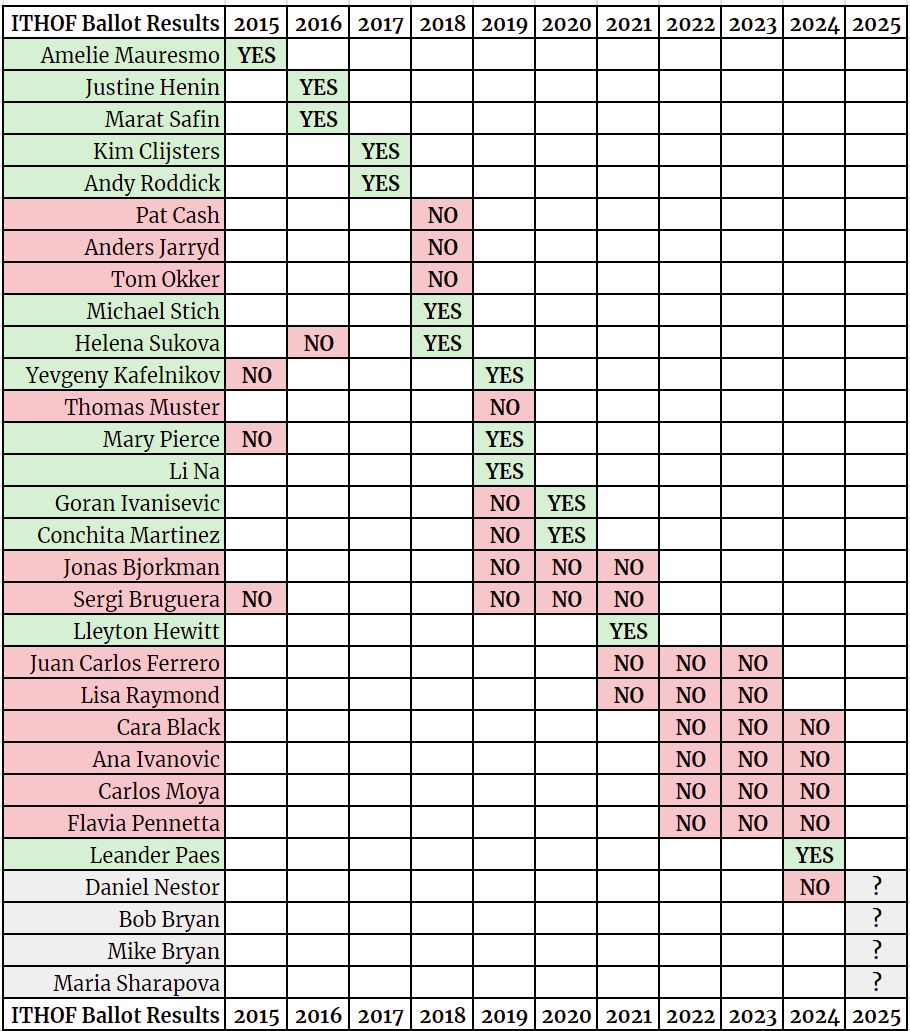The Hall of Fame Faces Its First (Positive) Test: Maria Sharapova
On Maria Sharapova's unprecedented Hall of Fame candidacy, which will set the framework for subsequent stars saddled with similar shadows.
Weeks before the big presidential election here in the United States, ballots were due last week for voting on the International Tennis Hall of Fame’s Class of 2025, determining who will be inducted at a ceremony in Newport, R.I. next August. Nominees needed to receive at least 75 percent of the vote to be enshrined.
This is my eleventh year as a member of the Hall of Fame “Recent Player” voting group, which primarily considers players who retired at least five years earlier.
There’s never been anything like the ballot we received this year.
Ballots in past years only contained statistical lists of achievements for each of the nominees: numbers of titles won, best performances at each major, weeks at No. 1, etc.
This year there were four nominees: Daniel Nestor, Bob Bryan, Mike Bryan, and Maria Sharapova.

For the first time, Hall of Fame staff added a text box of narrative about the career of each nominee on this year’s ballot. There were 101 words on Bob Bryan, 114 words on Mike Bryan, and 132 words on Daniel Nestor, all of them entirely focused on each doubles specialist’s on-court achievements.
Then came Maria Sharapova’s page of the ballot, which made it clear why the Hall of Fame felt it needed to change its ballot format this year: to provide context for how Sharapova stumbled into a positive test for a banned substance late in her career. After a brisk 64-word paragraph on Sharapova’s stellar on-court achievements—five major singles titles and a Career Grand Slam—the Hall of Fame included another 269 words on the adjudication of her 2016 positive test for the then-newly-banned substance meldonium, and detailed how Sharapova was initially handed a two-year ban that was reduced to 15 months on appeal at CAS. Two full paragraphs from the CAS decision, which was favorable to Sharapova, are quoted on the ballot, ending with CAS’s conclusion that “under no circumstances, therefore, can the Player be considered to be an ‘intentional doper’.”
So how should Sharapova’s positive test saga be viewed years later? How have other sports’ halls of fame handled similar cases? How will her case set a precedent for players like Simona Halep and Jannik Sinner? And how did I vote?
Let’s get into it.
[The article continues below for paid Bounces subscribers if you’d like to read more! There’s still more than 85 percent of the post left to go, and if you’ve gotten this far I’ll bet you’d like to read the rest and everything else Bounces has to offer!]



